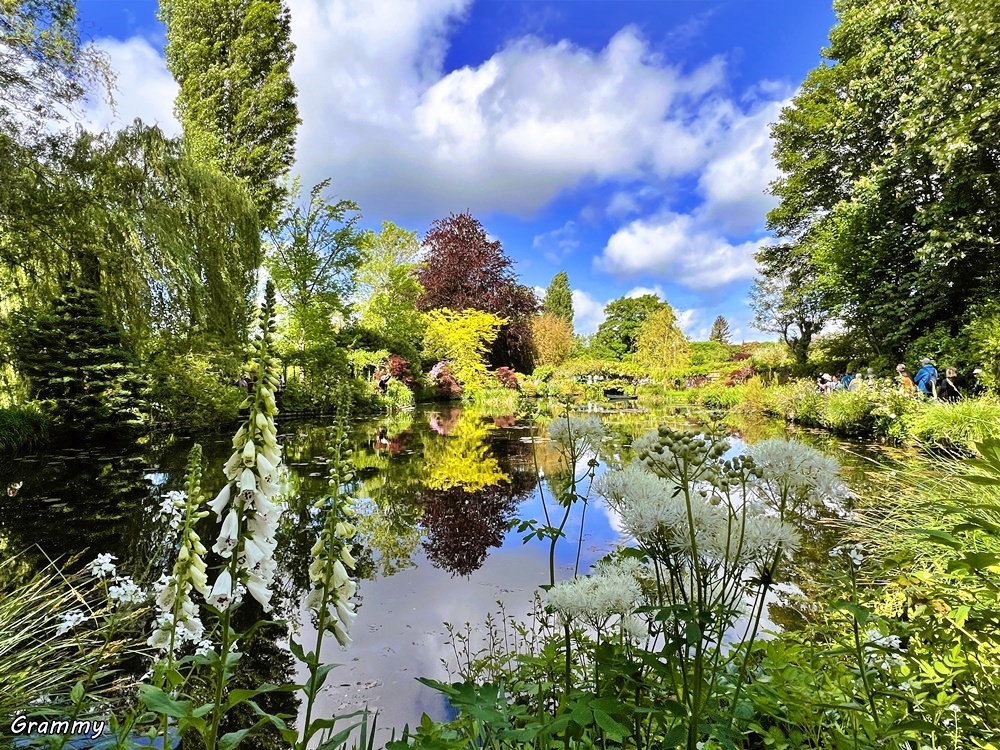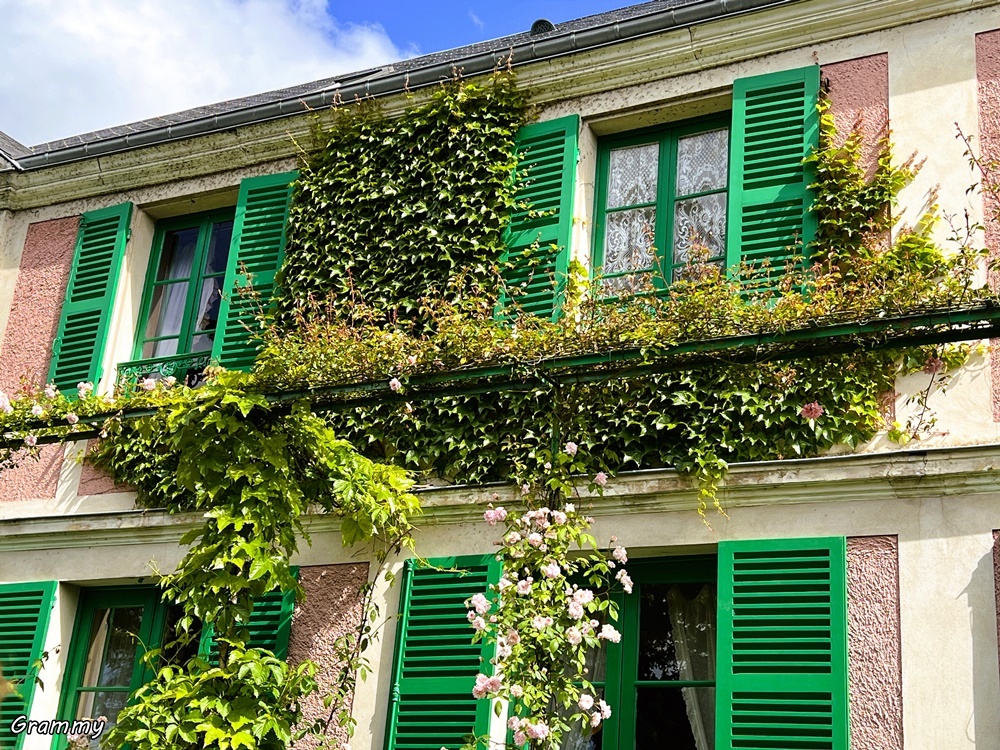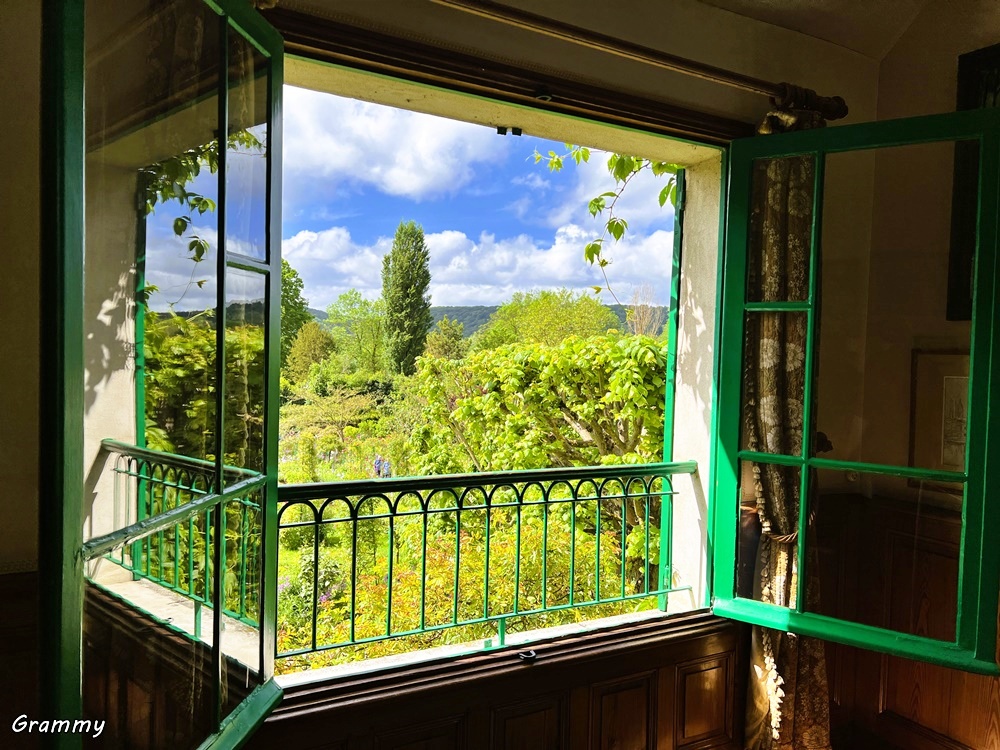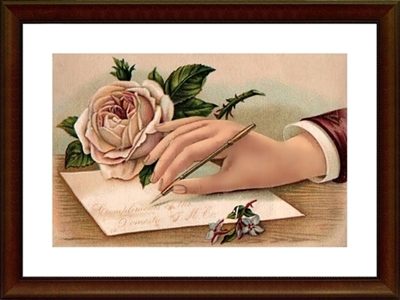
On our recent trip to France, I was able to visit the lovely town of Giverny for a tour of Monet’s Gardens. Just like Claude Monet’s paintings, the gardens are colorful, dramatic, and untamed.
Monet and his family settled in Giverny in 1883. At that point, he was already a famous artist who had revolutionized painting by setting up an easel and painting outdoors. In his day, artists had been trained to analysis their subjects and paint them in the controlled setting of a studio.

Monet loved to lead open-air painting safaris into the French countryside. He and his guests/students would find ordinary things like landscapes, seascapes, family picnics and ladies with parasols to paint in bright colors. I’m sure you’ve seen them!

By the time he moved to Giverny, Monet had begun to travel less and less. He developed an interest in botany and started renovating the flower garden in front of his house. He didn’t like an organized garden so he grouped flowers according to their color and left them to grow rather freely.
Ten years after he moved to Giverny, Monet bought land on the opposite side of the road from his house, which included a small brook. He created his first pond by diverting some of the water from the stream even though his neighbors were opposed. They thought his strange plants might poison the water.

The water garden was eventually expanded and Monet began to design his own private paradise. He planted bamboo and weeping willow on the banks of the pond and filled it with the now famous water lilies. (The lilies bloom all summer long, but sadly, we were too early for them.)
He added a Japanese bridge to the garden, prompted by the Japanese prints he so avidly collected. As years passed, the bridge became beautifully overgrown with wisteria. The gardens, like his paintings, took on a balanced “messiness”. This place, which was Monet’s source of inspiration, is where his famous paintings of water lilies, Japanese bridges, and flowery pathways came from.
It is ironic that the art world’s greatest visionary would begin to go blind from cataracts. His later work would be of fewer objects and more reflections from the pond’s surface, like clouds, and the blue of the sky, and the green of the trees that lined the shore of his favorite place.

Not only can you visit Monet’s gardens, but you can also visit his house; and because millions of people from all around the world seek to know about his life, waiting in line for over an hour to go inside is not unusual.
Monet’s house is a host of colors with simple furniture, quaint lace curtains, and copies of much of his work. It also includes the collection of Japanese prints that influenced his water garden. There is an inviting blue kitchen and a bright yellow dining room, but more than anything else in his house, I enjoyed the view of his beloved garden from his bedroom window the most.


The town of Giverny is just as enchanting as Monet’s garden:
If you are an artist, a botanist, or just an admirer of beauty, you might enjoy a visit to Giverny – the place that motivated the greatest impressionist artist the world has ever known, the Father of Impressionism, Claude Monet.
If you receive this post by e-mail, please read it here for proper formatting.



















The flowers on the table in the yellow room look like a Van Gogh painting! All of it so beautiful.
Gwen.
LikeLiked by 1 person
Don’t they? I came away wishing I had an ounce of his vision and artistic talent! Take care, Gwen!
LikeLiked by 1 person
It’s so beautiful I can see why Monet was inspired. Maggie
LikeLiked by 1 person
I don’t see how an artist would not be inspired here! I loved it!
LikeLiked by 1 person
That first picture is my favorite. The gardens are beautiful! I would live to visit.
LikeLiked by 1 person
My favorite too, but there was beauty everywhere!
LikeLiked by 1 person
Beautiful! Especially love that first one!
LikeLiked by 1 person
Thank you, that’s my favorite as well!
LikeLiked by 1 person
What a beautiful place that you’ve done a fantastic job capturing and describing. 👏🏻
LikeLiked by 1 person
Thank you so much! The gardens were more beautiful than I imagined they would be!
LikeLiked by 1 person
Thank you! What a treat. 🙏🏻
LikeLiked by 1 person
wow what a lovely collection of photos
LikeLiked by 1 person
You’re so kind. Thanks much!
LikeLike
Beautiful shots!!!
LikeLiked by 2 people
Thanks much! The gardens were just so beautiful.
LikeLike
I was hoping that spectacular first photo was Kansas 😉
LikeLiked by 1 person
I wish! It might help if I had the vision of Monet… and a gardener!
LikeLiked by 1 person
These flowers are so amazing. Anita
LikeLiked by 1 person
He had a special talent for creating beauty!
LikeLiked by 1 person
It’s a cold day in Sydney Australia where I am reading this – the photos are so lovely, I can feel the heat and colors emanating off them – thank you for the armchair escape! Linda 🙂
LikeLiked by 1 person
Thank you for spending time with the post. Monet’s Garden was a beautiful place… as is Sydney, by the way!
LikeLike
🥰
LikeLike
Such a gorgeous garden, especially on a sunny day! 🙂
LikeLiked by 1 person
It is one of those places I’d love to see in all different kinds of light!
LikeLiked by 1 person